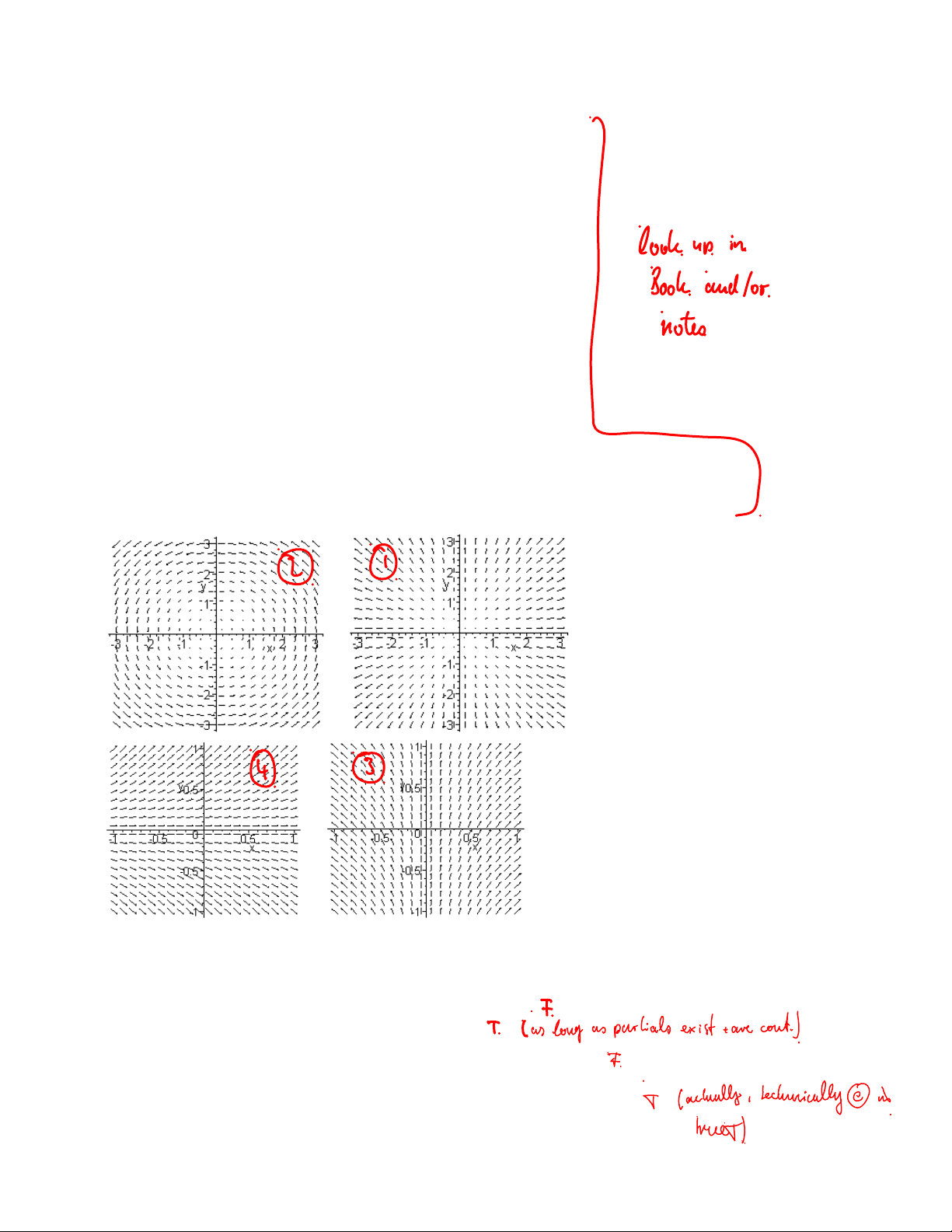
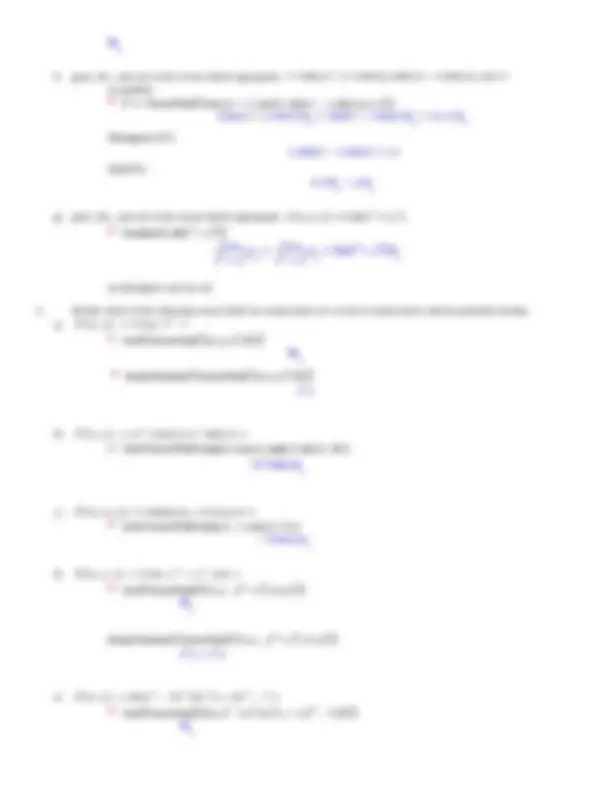
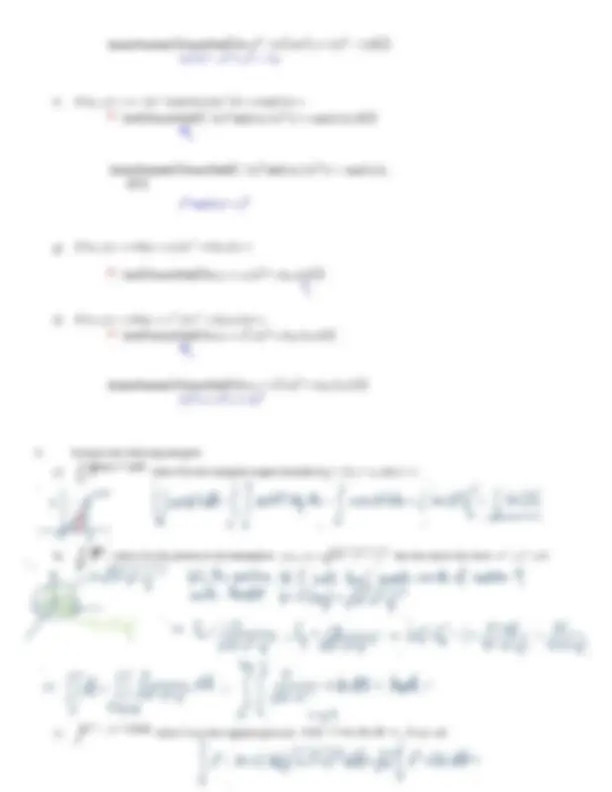
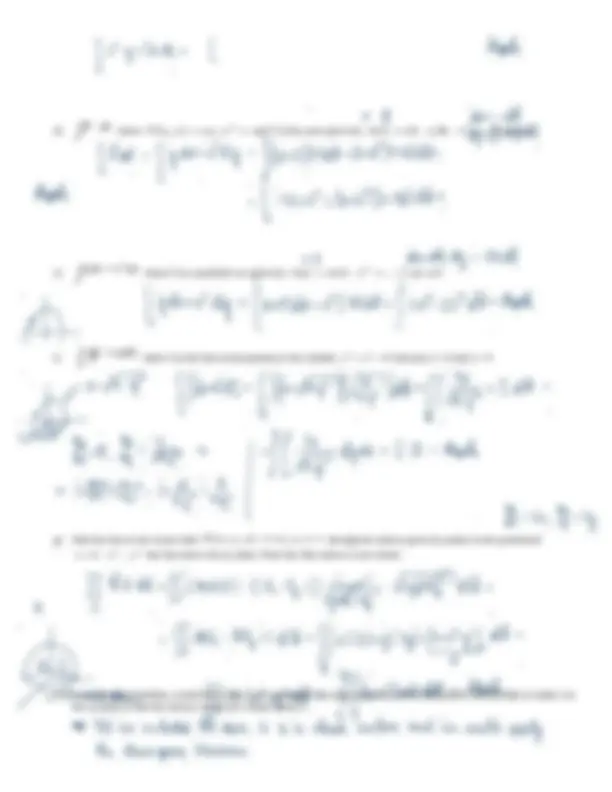
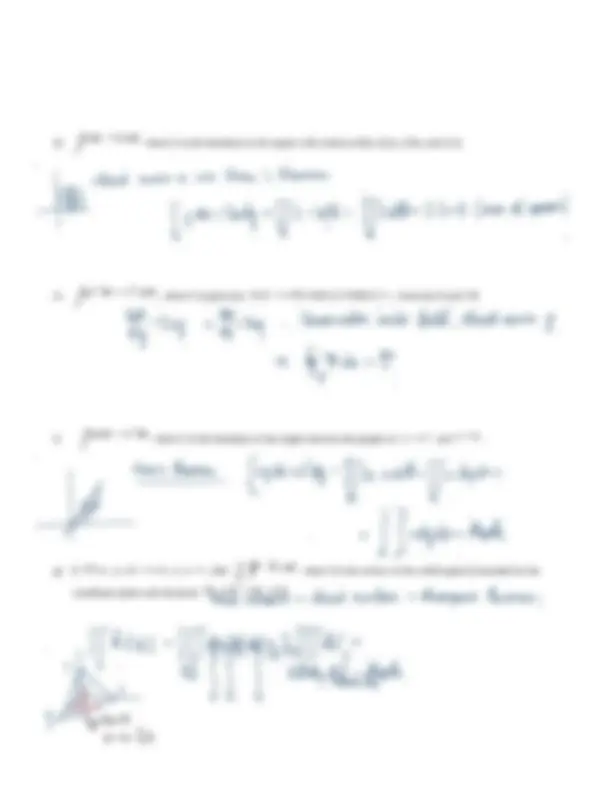
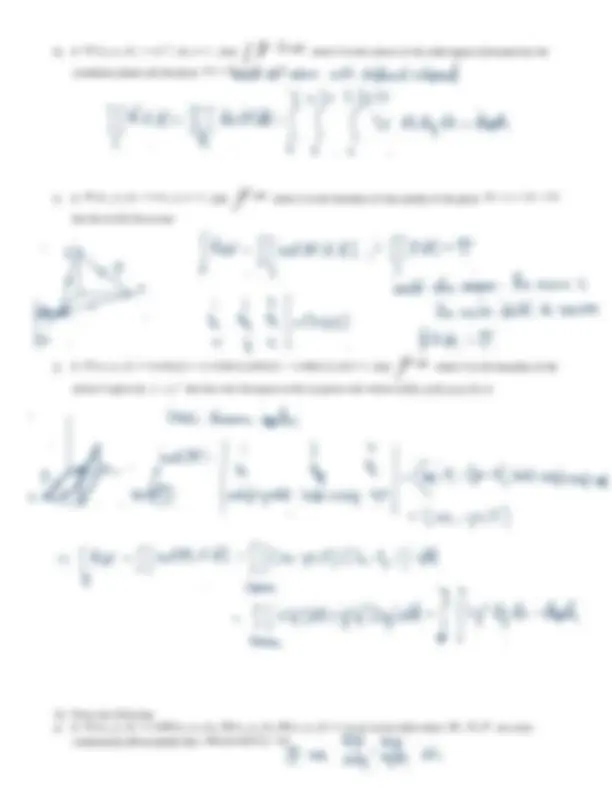
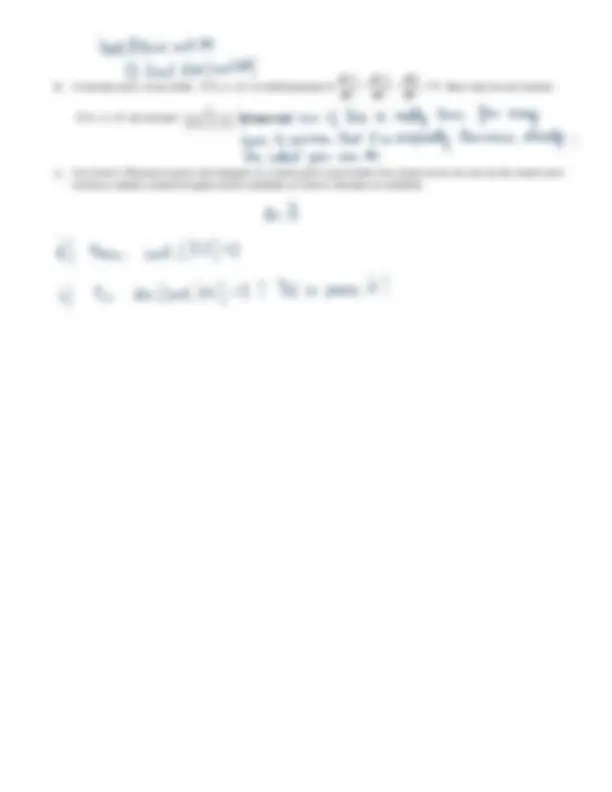


Study with the several resources on Docsity

Earn points by helping other students or get them with a premium plan


Prepare for your exams
Study with the several resources on Docsity

Earn points to download
Earn points by helping other students or get them with a premium plan
Community
Ask the community for help and clear up your study doubts
Discover the best universities in your country according to Docsity users
Free resources
Download our free guides on studying techniques, anxiety management strategies, and thesis advice from Docsity tutors
A practice exam for math 2511: calc iii, focusing on vector calculus concepts such as vector fields, line integrals, green's theorem, and the divergence theorem.
Typology: Exams
1 / 10

This page cannot be seen from the preview
Don't miss anything!







Math 2511: Calc III - Practice Exam 3
R
R f ( x , y ) dA
R
C f ( x , y ) ds
C F dr where F is a two or three dimensional vector field
C M ( x , y ) dx N ( x , y ) dy g) f x y zdS C
h) F NdS C
(^) , where F is a three-dimensional vector field i) What does it mean when a “line integral is independent of the path”? j) State the Fundamental Theorem of Line Integrals k) Please state Green’s Theorem. Make sure to know when it applies, and in what situation it helps l) Please state the Divergence Theorem. Make sure to know when it applies, and in what situation it helps m) Please state Stokes’ Theorem. Make sure to know when it applies, and in what situation it helps
C F dr for every path C
C F dr for every closed path C
C F dr for every closed path C inside that disk
R dA (^) denotes the surface area of the region R
R dS (^) denotes the volume of the region R h) Can you apply the Fundamental Theorem of line integrals for the function f ( x , y , z ) xy sin( z )cos( x^2 y^2 )? i) Can you apply the Fundamental Theorem of line integrals for the vector field F ( x , y ) 6 xy^2 3 x^2 , 6 x^2 y 3 y^2 7 ? j) Can you apply Green’s theorem for a curve C, which is a straight line from (0,0,0) to (1,2,3)? k) Can you apply the Divergence theorem for a closed surface S that lies in the xy-plane l) Can you apply Stoke’s theorem for a closed surface, i.e. a surface that bounds a solid object in space? m)
a) Find div(F)
b) Find curl(F)
c) Find curl(curl(F))
d) Find div(curl(F))
e) grad., div., and curl of the vector field if appropriate ^ x^2 ,^ y^2 , z^2 grad no good
f) F ( x , y ) 2 y^3 sin( 2 x ), 3 y^2 ( 1 cos( 2 x )
g) F ( x , y ) 4 xy z , 2 x^2 6 y , 2 z
h) F ( x , y ) 4 xy z^2 , 2 x^2 6 yz , 2 xz
R cos( x^2 ) dA where R is the triangular region bounded by y = 0, y = x, and x = 1
R dS (^) , where S is the portion of the hemisphere f ( x , y ) 25 x (^2) y (^2) that lies above the circle x (^2) y (^2) 9 c) x y zds C
2
C
C
f) x zdS S
g) Find the flux of the vector field F^ (^ x , y , z )^ x , y , z through the surface given by potion of the paraboloid z 4 x^2 y^2 that lies above the xy-plane. Note that this surface is not closed. h) In the previous problem, would it be easier if we considered the same surface as before, but joined with the disk of radius 2 in the xy plane so that the surface would be a closed surface?
C y^3 dx ( x^33 xy^2 ) dy where C is the path from (0,0) to (1,1) along the graph of y x (^3) and from (1,1) to (0,0) along
C F dr where F ( x , y ) y (^3) , x (^3) 3 xy (^2) and C is the circle with radius 3, oriented counter-clockwise (You may need the double-angle formula for cos somewhere during your computations)
R dA (^) where R is the ellipse 1 4 9 2 2 x y
boundary C of the ellipse R.
C 2 xyzdx x^2 zdy x^2 ydz where C is a smooth curve from (0,0,0) to (1,4,3)
C ydx 2 xdy where C is the boundary of the square with vertices (0,0), (0,2), (2,0), and (2,2)
C xy^2 dx x^2 ydy , where C is given by r ( t ) 4 cos( t ), 2 sin( t ), t between 0 and 2 Pi.
C
S F N dS where S is the surface of the solid region Q bounded by the coordinate planes and the plane 2 x ^3 y ^4 z ^12
b) A function (not a vector field) f^ (^ x , y , z ) is called harmonic if 2 0 2 2 2 2 2
z f y f x f
. Show that for any function f ( x , y , z ) the function ( , , )
f x y z is harmonic. c) Use Green’s Theorem to prove that integrals of a conservative vector fields over closed curves are zero (if the closed curve encloses a simply connected region and all conditions of Green’s theorem are satisfied).